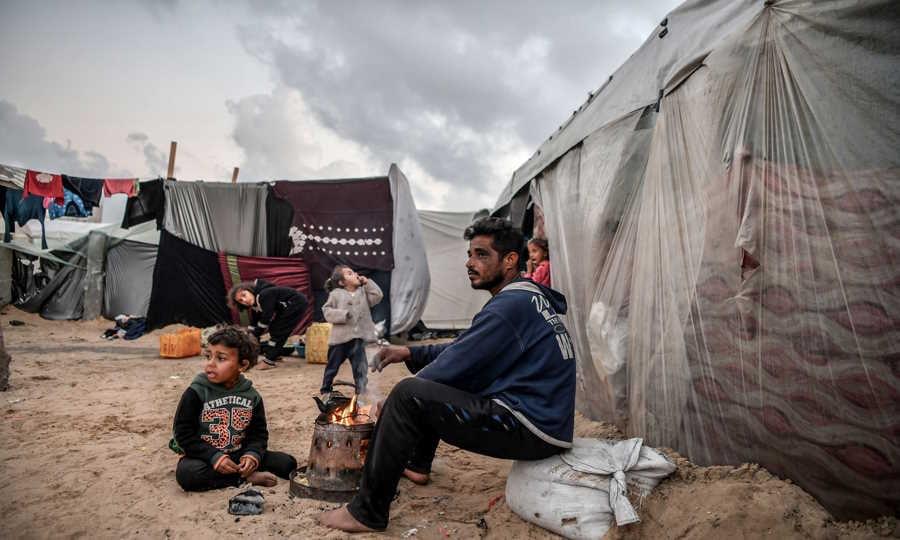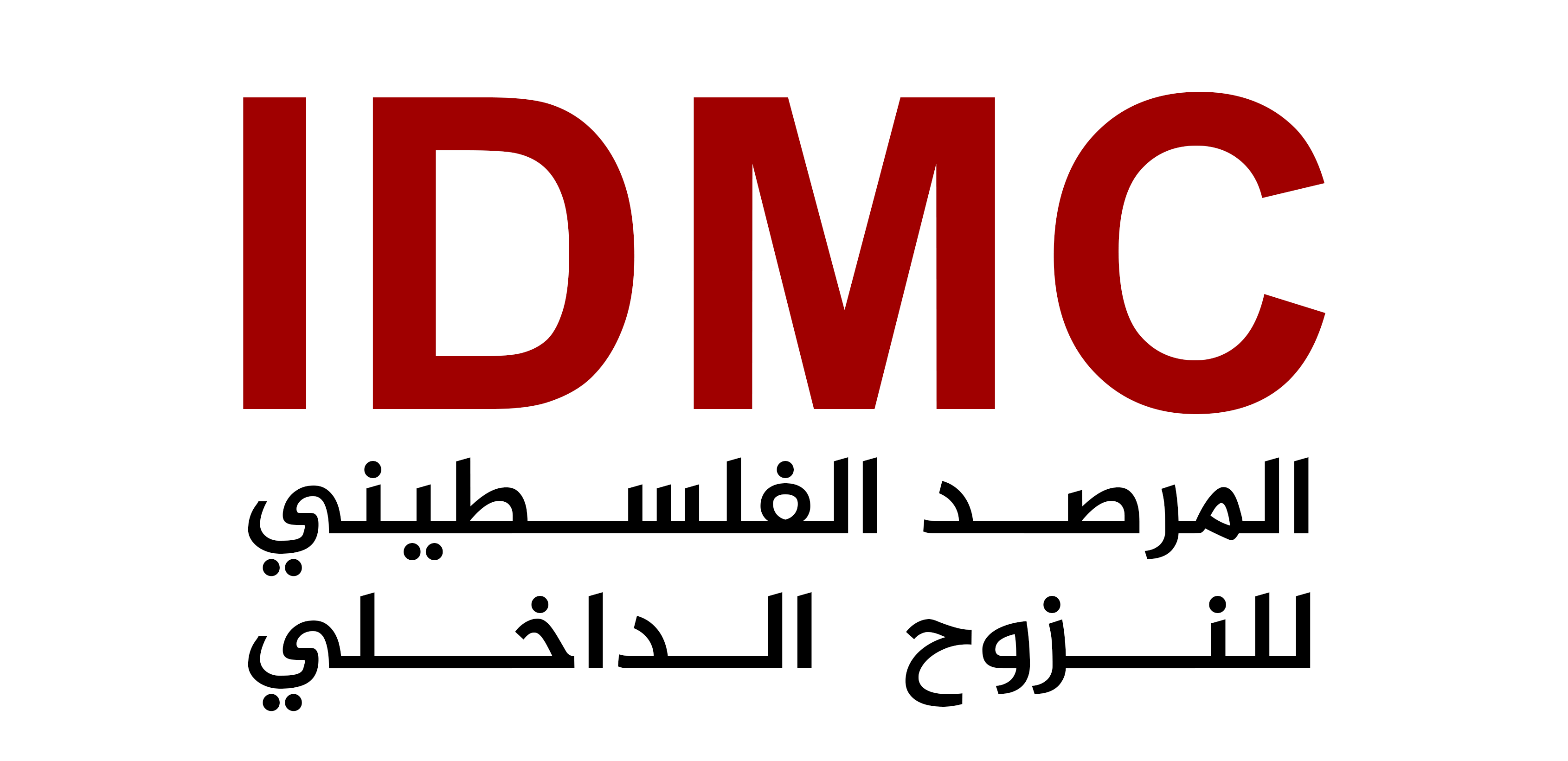
The Reality of Displacement Shelters in Gaza
The Historical Evolution of Displacement in Gaza
Gaza has endured multiple waves of displacement throughout its modern history, starting with the Nakba in 1948, when tens of thousands of Palestinians were forced to flee to the Strip after being expelled from their towns and villages. Since then, displacement has become a recurring part of life in Gaza, driven by continued armed conflict and military operations.
Between 2008 and 2024 alone, several major waves of internal displacement occurred, especially during large-scale military assaults in 2008, 2009, 2012, 2014, and in later years. In each instance, families were forced to abandon their homes in search of safety, often finding themselves moving between temporary shelters hastily established to accommodate the growing number of displaced people.
This recurring displacement has generated institutional knowledge in crisis management but has also drained limited resources and exhausted Gaza’s humanitarian capacities, especially under the blockade imposed since 2007. As violence intensified and displacement became more frequent, temporary shelters evolved into a near-permanent feature of Gaza’s humanitarian landscape. Schools, mosques, and community centers have frequently been repurposed to house the displaced, often long after hostilities subside due to widespread destruction or unsafe conditions in their original neighborhoods.
Types and Geographic Distribution of Shelters
Gaza suffers from poor infrastructure, and repeated military operations have further degraded public buildings and services. Despite the urgent need, Gaza lacks purpose-built displacement shelters and adequate services in designated emergency zones. Shelter types in Gaza can be categorized as follows:
- Schools: Schools, particularly those operated by UNRWA and the government, constitute the majority of displacement shelters due to their widespread availability and ability to house large numbers. These schools are mainly located in densely populated areas such as refugee camps and urban centers like Gaza City, Khan Younis, and Rafah. According to UNRWA, around 1.9 million Palestinians (over 85% of Gaza’s population) have been displaced, many multiple times due to repeated bombings. About 1.4 million people have sought refuge in 154 UNRWA facilities, including schools, training centers, and administrative buildings.
- Places of Worship and Community Centers: Religious institutions have played a crucial role, especially during the early stages of displacement. According to the Palestinian Observatory for Internal Displacement, many families initially took shelter in mosques. The Christian community in Gaza also sought refuge in churches throughout the war. Local community centers and charitable organizations have hosted smaller groups of displaced families.
- Temporary Camps: In large-scale displacements, open spaces like playgrounds and public squares are transformed into tent camps. These structures offer little protection against the elements, especially in winter or extreme summer heat.
- Hospitals and Health Centers: In some cases, the courtyards of hospitals and health facilities are used to shelter families, particularly those with injured or ill members. During the recent war, many displaced people crowded into these health centers, some of which were directly bombed or stormed, most notably al-Shifa Hospital, which endured large-scale military operations and deadly assaults.
- Host Families and Relatives: Though not officially classified as shelters, the homes of extended family members accommodate a large number of displaced individuals, especially in the early stages. These homes quickly become overcrowded and place additional strain on limited resources.
Geographically, western areas of Gaza’s cities have historically served as receiving zones for displaced populations, while eastern areas—particularly those near borders—are often the source of displacement. During the 2023–2024 genocide campaign, the Israeli occupation expanded its operations in northern Gaza and around Gaza City, forcing evacuations from these regions. Israel declared the al-Mawasi area of Khan Younis a "humanitarian zone," leading to a concentration of shelters in the central and southern areas, particularly during times of escalation. The governorates of Deir al-Balah, Khan Younis, and Rafah saw the highest number of shelters, while parts of Gaza City became areas of mass depopulation.
Basic Services in Displacement Shelters
Shelter and Housing
Most shelters are severely overcrowded, often hosting far more people than they were designed to accommodate. Classrooms, for example, might house 40–60 people in spaces built for 30–35 students. Families typically sleep in open areas with minimal privacy, separated by improvised partitions at best.
One displaced individual reported: “We live in a UNRWA school, sharing classrooms with multiple families. There’s no space, no privacy. It’s unbearable.”
In tent camps, conditions are worse—tents offer little protection against winter rains and summer heat, often flooding or overheating depending on the season.
Water and Sanitation
One of the most pressing challenges is the shortage of clean drinking water. Shelters rely on water trucks, which are often insufficient. The available water is frequently contaminated, forcing people to drink it anyway, or purchase bottled water at high prices.
A displaced person told the Palestinian Observatory for Internal Displacement: “The water we drink isn’t clean, but we have no other choice. Many people are getting sick because of it.”
Sanitation facilities are under immense strain, often breaking down and leading to foul odors and insect infestations. The ratio of toilets to people is far below international standards—sometimes one toilet for every 70–100 people, while the global standard recommends one for every 20. According to OCHA, shelters also suffer from food shortages, lack of clean water, and minimal healthcare services, leading to disease outbreaks and malnutrition.
Food and Nutrition
Food distributions are irregular and insufficient. Basic rations consist of items like rice, legumes, oil, and sugar, with severe shortages in fresh produce and proteins—resulting in malnutrition, especially among children and pregnant women.
Hisham Issa, a 39-year-old father of four daughters, said from a tent camp in al-Mawasi:
“Every day we wait for aid, but many times, we’re not on the list. We wait for hours in the sun, only to be turned away. My children go to sleep hungry—we have nothing to give them.”
Distribution mechanisms are often disorganized, and some families are excluded or delayed. Many are forced to buy food from local markets at inflated prices. According to WFP, over 60% of Gaza’s population faces severe food insecurity. UNICEF reports that one child dies every 10 minutes due to hunger and malnutrition.
Healthcare
Most shelters lack adequate healthcare. Many only have basic first-aid stations without proper equipment or medication. More serious cases must be referred to hospitals, which are themselves overwhelmed and under-resourced.
Contagious diseases spread rapidly due to overcrowding and poor hygiene, especially respiratory, skin, and intestinal illnesses. Vulnerable groups—such as the elderly, disabled, and chronically ill—face even greater barriers to accessing care.
WHO reports that 70% of Gaza’s hospitals are out of service due to bombardment and fuel shortages. OCHA states that over 50,000 displaced people with chronic illnesses are not receiving proper treatment. The collapse of the healthcare system has led to the spread of diseases like food poisoning and diarrhea, worsened by poor sanitation and restricted humanitarian access.
Education
Displacement severely disrupts education, especially when schools are used as shelters. Even when classes resume, conditions are unsuitable due to overcrowded classrooms and lack of materials.
Since the beginning of the genocide war, Israeli forces have deliberately targeted Gaza’s educational infrastructure. Around 88% of schools have been bombed directly; 61% were completely destroyed or heavily damaged. Many remaining schools were repurposed as shelters, making them unfit for education. OCHA estimates that over 625,000 students have had their learning completely disrupted.
Displaced children also face psychological challenges adjusting to new learning environments after enduring trauma and violence. In October 2023, more than 600,000 school students were expected to begin the academic year, including 60,000 high schoolers and 87,000 university students. But classes were halted entirely. Students and teachers were displaced, reduced to collecting firewood and plastic, standing in bread lines, and enduring repeated evacuations and attacks—even within supposed shelters.
Protection and Security
Displacement shelters lack adequate safety and protection measures, especially for vulnerable groups such as women, children, the elderly, and people with disabilities. Reports have documented multiple incidents of violence and harassment, often exacerbated by poor lighting and lack of privacy.
These shelters also rarely have clear emergency plans in place for secondary evacuations or natural disasters like floods.
Mohammad al-Jaabari, a 40-year-old father of three, said:
“I never imagined the roof over my head would become a torn piece of cloth. I lost my livelihood and had to scrape together money to pitch a tent on land that isn’t even mine. When it rains, water leaks in from all sides. We used to love winter—now it's a nightmare. Every gust of wind terrifies us, fearing the tent will collapse.”
Some shelters have been directly bombed or targeted, causing casualties and mass panic. Firsthand testimonies reflect the depth of suffering endured. According to the Al Mezan Center for Human Rights, Israeli forces carried out 41 land, air, and sea attacks targeting shelters in areas declared “humanitarian zones.” These attacks killed 355 people, including 36 women and 45 children, and wounded more than 743 others.
Key Challenges Facing Displacement Shelters
Displacement shelters in Gaza face multifaceted challenges that hinder their ability to meet the basic needs of displaced people. These can be summarized as follows:
Logistical and Operational Challenges
- Inadequate Shelter Space: Shelters lack sufficient space relative to the number of displaced people. Overcrowding undermines dignity, privacy, and basic comfort.
Ibrahim Issa, 56, who lives in a makeshift camp in al-Mawasi, said:
“These camps are unlivable. We are crammed into tiny spaces with no clean water, no health services, and not even lighting. When it rains, the ground turns into a swamp of mud and stagnant water.” - Poor Infrastructure: Most shelter buildings were not designed to house people long-term. They suffer from broken water, sewage, and electrical systems.
- Lack of Supplies: There’s a severe shortage of essentials like mattresses, blankets, food, clean water, and medicines. The restriction on humanitarian aid has worsened the crisis.
According to OCHA, between September and November 2024, aid supplies only reached 285,000 people, while 945,000 more urgently needed winter assistance. - Access and Delivery Issues: Humanitarian organizations struggle to deliver aid due to security risks, closed crossings, and logistical barriers, leading to delays or interruptions in aid distribution.
International Standards for Displacement Camps
Safety and Security Requirements
According to UNHCR, displacement shelters must provide safe environments, free from violence, exploitation, or military threats. Camps must never be militarized or turned into targets during conflict.
Minimum Standards in Food, Water, Health, and Housing
Displacement camps in Gaza suffer from extreme shortages. Clean water is scarce due to damaged or inadequate desalination facilities. As a result, people drink polluted water, risking disease.
OCHA estimates that 95% of Gaza’s water is unfit for human consumption due to bombing and infrastructure collapse.
Most camps also lack proper sanitation, relying on absorption pits that pose serious health risks. The Sphere Standards—a global humanitarian framework—set minimum requirements for displacement camps:
- Food: Each person should receive at least 2,100 kilocalories per day.
- Water: Each person must have access to 15 liters of clean water daily.
- Health: One health center per 10,000 people, with access to essential medications.
- Housing: At least 3.5 square meters per person for living space.
Legal Responsibility and International Accountability
The violations endured by displaced Gazans raise serious legal and moral questions. Under international humanitarian law, warring parties are obligated to protect civilians and ensure unimpeded access to humanitarian aid. The Geneva Conventions require the provision of safe shelter, medical care, and adequate food for displaced populations.
Despite these obligations, displaced Gazans continue to suffer under a blockade, the destruction of infrastructure, and targeted attacks—actions that constitute crimes demanding legal accountability.
Although the International Criminal Court (ICC) has jurisdiction over war crimes, crimes against humanity, and genocide, political obstruction by powerful actors often delays or prevents prosecution, enabling a culture of impunity.
Holding perpetrators accountable through international mechanisms—whether ICC investigations, UN fact-finding missions, or universal jurisdiction laws in third countries—is not only a legal necessity but a moral imperative to end ongoing abuses and prevent their recurrence.
International humanitarian law provides the framework for protecting civilians and displaced persons during armed conflict, including:
- The 1949 Geneva Conventions, especially the Fourth Convention on civilian protection and the prohibition of forced displacement.
- The 1977 Additional Protocol I, which prohibits indiscriminate attacks (Article 51) and the use of starvation as a weapon of war (Article 54).
- Article 8 of the Rome Statute, which classifies intentional attacks on civilians as war crimes.
Recommendations
In light of the catastrophic reality facing Gaza’s displaced population—including denial of aid, healthcare, safe shelter, and legal accountability—urgent, practical solutions must be adopted to uphold their basic human dignity. Key recommendations include:
1. Improve Camp Conditions According to International Standards
- Redesign camp layouts to meet minimum humanitarian standards for space, hygiene, and ventilation.
- Increase the number of tents and ensure they are weatherproof and equitably distributed.
- Build adequate sanitation facilities, with regular maintenance to prevent disease outbreaks.
- Expand access to clean water and upgrade sewage systems.
2. Ensure Fair and Regular Distribution of Aid
- Implement transparent, independently monitored aid distribution systems to prevent favoritism or manipulation.
- Strengthen coordination between aid agencies to prevent interruptions.
- Establish emergency supply routes supported by international actors.
- Involve local communities in aid management to ensure fairness and reduce corruption.
3. Improve Healthcare in Camps
- Expand field clinics and medical teams to reach all camps.
- Ensure a stable supply of essential medicines, especially for chronic patients.
- Provide round-the-clock ambulance services.
- Launch vaccination and preventive care campaigns, especially for children and the elderly.
4. Strengthen International Accountability
- Support documentation efforts by human rights organizations and submit evidence to UN bodies.
- Activate the ICC to investigate crimes including aid obstruction and infrastructure attacks.
- Use universal jurisdiction to prosecute violators in third-country courts.
- Apply political pressure to compel responsible parties to protect civilians and allow aid access.
5. Develop Long-Term Solutions to Displacement
- Launch an international reconstruction plan to rebuild destroyed homes and allow displaced families to return.
- Replace tents with temporary prefabricated housing units.
- Provide displaced families with job opportunities and small business support to reduce reliance on aid.
- Commit to legal protections against forced displacement in future conflicts.
Conclusion
The displacement crisis in Gaza is a humanitarian catastrophe that demands urgent international action to protect the lives and dignity of those affected. Ending the suffering of Gaza’s displaced population requires a swift, coordinated, and rights-based response. These recommendations are not merely aspirations—they are basic human rights that must be respected and fulfilled without delay, to protect hundreds of thousands of innocent civilians living in inhumane conditions under the weight of war.

Mahmoud Ragheb Afana
Legal and Sharia lawyer, and human rights activist with a strong interest in international law issues.
 English
English

